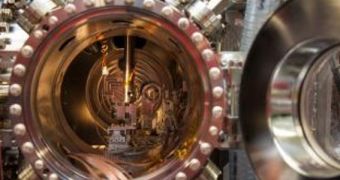A recent study conducted at the US Department of Energy's (DOE) SLAC National Accelerator Laboratory demonstrates that the Linac Coherent Light Source (LCLS) X-ray laser at the facility can be used in combination with complex computer analysis tools to develop accurate, three-dimensional models of protein.
Interestingly, this capability holds true even for proteins whose structure was not previously determined, or at least hinted at. This breakthrough was made possible by the fact that the light emitted by the LCLS is perfectly suited for studying very small crystals, e! Science News reports.
SLAC and Arizona State University investigators published details of the experiments in the November 24 issue of the top scientific journal Nature. The team says that many conventional X-ray sources are simply not able to resolve structures as fine as the LCLS can.
“Determining protein structures using X-ray lasers requires averaging a gigantic amount of data to get a sufficiently accurate signal, and people wondered if this really could be done. Now we have experimental evidence. This really opens the door to new discoveries,” says Max Planck Institute for Medical Research scientist Thomas Barends, who was a member of the experiment team.

 14 DAY TRIAL //
14 DAY TRIAL //